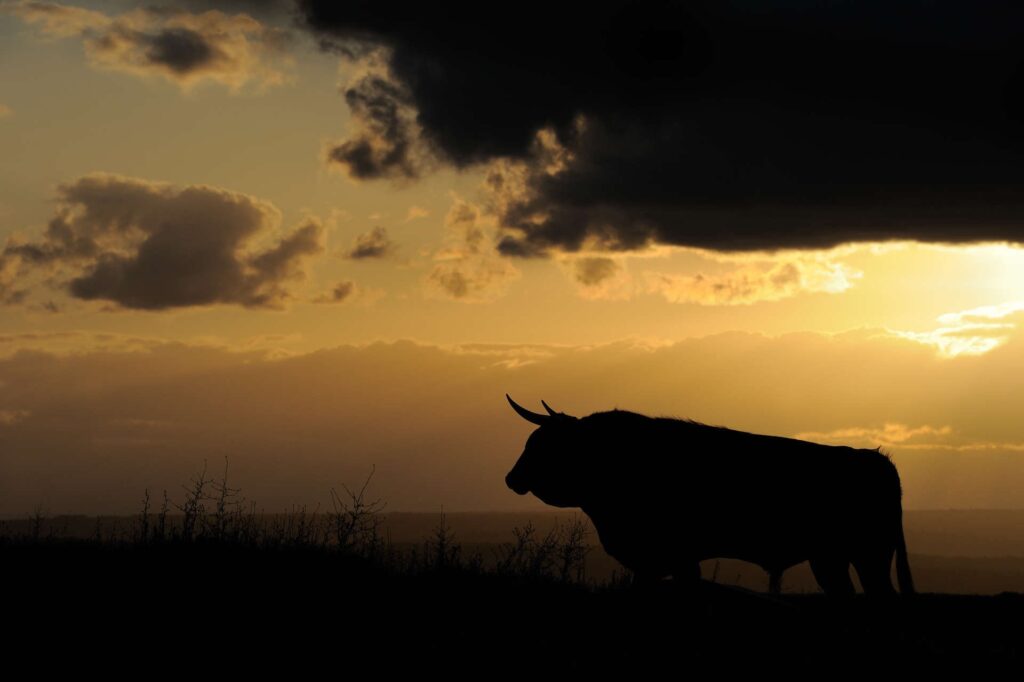
Northern Portugal’s Coa valley thrives with reintroduced ancient cattle, benefiting wildlife and community
We must have appeared peculiar to outsiders. Twenty individuals gathered on Ermo das Aguias, a rocky hillside in Portugal’s Coa valley, capturing photos and marveling in hushed tones at what seemed like a corral of brown cows
These were not your typical cows; they were tauros. These specially bred creatures represent a revived version of the long-extinct aurochs, last witnessed in this area 400 years ago. Their reintroduction is part of the ongoing efforts of Rewilding Portugal, a non-profit organization established four years ago. Their primary goal is to establish a wildlife corridor spanning the entire length of the Côa River valley, connecting the vital habitats between the Douro River in the north and the Malcata mountains in the south.
Once a thriving agricultural region that attracted resilient farmers due to its challenging terrain, the valley has suffered from depopulation as people migrated to more fertile areas and left behind their family farms, which have since become overgrown. However, Pedro Prata, the team leader of Rewilding Portugal, has devised a plan: rewilding as a means of promoting tourism.
“Currently, people typically spend only a night in the Côa valley while en route to the Algarve, thinking that there is nothing of interest,” explains Pedro. “By acquiring and rewilding the farmland, reintroducing large herbivores like the tauros to create a diverse landscape, we can enhance biodiversity, prevent wildfires (as ungrazed scrub is highly flammable), and provide visitors with compelling reasons to extend their stay.”
A few days prior to my arrival, I embarked on an overnight journey aboard the environmentally friendly Brittany Ferries Santoña ship, which operates on greener, low CO2-emitting LNG fuel. The voyage took me to Santander in Spain. From there, I made my way to Vila Nova de Foz Côa, a town situated near the Douro River, approximately 130 miles east of Porto. Upon reaching the Côa Museum, I was greeted by my guide, João Pedro, who provided me with an introduction to the valley below, renowned for its remarkable collection of 5,000 pieces of Palaeolithic rock art
Almost lost forever,” he remarks, gesturing towards the remnants of a dam that was intended to be constructed in the early 1990s but was halted when archaeologists stumbled upon the initial rock carvings. Among them was a depiction of a group of aurochs. “Consider the significance of that,” he emphasizes. “For 30,000 years, people immortalized them in their artwork. That creature wasn’t just important; it was pivotal to their survival.”
His enthusiasm for these long-extinct megafauna, whose demise was a result of hunting and the domestication of cattle, is mirrored by Pedro from Rewilding Portugal. I had the pleasure of meeting Pedro the following day after spending the night at Rewilding Portugal’s newly established Rewilding Centre in the tranquil village of Vale de Madeira. This center serves as a focal point for visitors, offering educational resources on rewilding projects and organizing excursions in the surrounding area
Following a restful night at the well-appointed, six-bedroom lodge with self-catering facilities, I join Pedro to witness the release of the tauros. These magnificent creatures have been brought from a breeding program in the Netherlands and will initially reside within a spacious fenced enclosure before eventually being set free into the wider area. It’s an immensely significant moment for the team, and their excitement is palpable. However, they are not the sole herbivores in the vicinity. Sorraia horses have been present on the land for approximately a year. These equines, smaller in size compared to the average horse, display predominantly brown and yellow coats, occasionally adorned with zebra-like mule stripes on their legs. While indigenous to Portugal, their population is estimated to be merely 200.
“We now have these two large grazer species actively shaping the landscape,” Pedro proclaims with pride. “This will impact the distribution of plant life, provide prey for predators, and offer remains for scavengers as well. By reintroducing these missing elements to our ecosystem, we are also creating opportunities for wildlife observation



